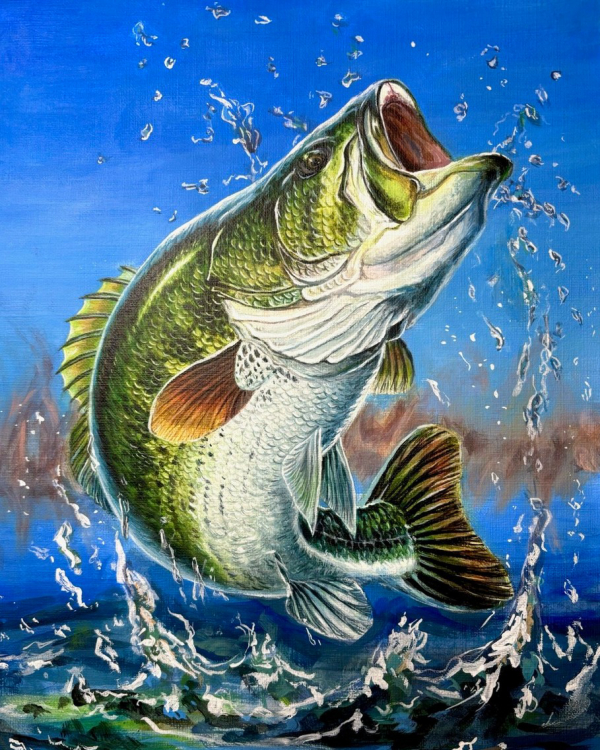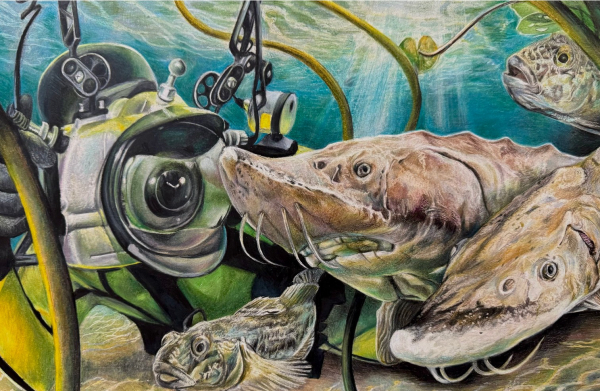
This is a touchy subject, to be sure.
But to anyone who views the amazing Wildlife Forever Art of Conservation Fish Art Award winners this year, the last name of every child is notable for the consistency of apparent Asian-American heritage.
Not just some of them—all of them, at every grade level, in first, second and third.
Not only did the Asian-American kids win all the 12 fish categories, they also swept four additional new Guy Harvey-sponsored shark categories.
And just announced, the winners of the Fish of the Great Lakes Art Awards were:
The works are all impressively good. The winner of Best of Show in the main contest, a leaping largemouth bass, is about as good as you’d expect from a successful adult commercial artist with long experience.
These contests are “blind” judged—the judges don’t know the kids names or their schools until after the selection process. The kids won fair and square from all we can see.
Asian-Americans make up only 7 percent of the U.S. population according to Pew. How can it be that they win 100 percent of the awards?
First, I’d guess what anyone who knows a successful Asian-American family in the U.S. can’t help but notice the great expectations they have for their kids—the “tiger mom” trope. The parents expect a lot, the kids know it, and many of them deliver.

And they know success for their kids doesn’t just happen—the kid’s learning day begins and ends at home, before and after school. And the majority doesn’t spend weekends playing video games and certainly not hanging out on street corners.
Also of interest, Pew says Asian-American families have 2.2 kids per family—fewer than whites, blacks or Hispanics.
Put all your eggs in one basket, then watch the basket. It’s good advice for investing, good advice for raising kids, too, apparently.
This is not just in art, of course. A lot of Asian-American kids excel in all academic subjects. And while many of them are clearly gifted, it’s also highly likely that good old sweat equity is what puts so many of them at the top of the heap when it comes to admission to top colleges and universities, at least those where merit is the determining factor.
An Alphabet of 50,000 Characters
For the art, we also wonder if the nature of Asian writing might have something to do with the impressive skills these young people displayed in the contest.

Many Asian-American kids learn the intricacies of calligraphy at an early age, and unlike our language, with 26 characters that are easily recognized even when slapped down with a pencil at breakneck speed to capture course notes, most of the Asian languages have an intricate system of precise images to represent objects and ideas. Most educated Chinese, for example, are said to recognize 3000 to 6000 characters of the 50,000 or so characters in the lexicon. Japanese has a similar complexity.
Shaping a concept with these figures has to be done carefully and precisely so they will be understandable. This may well be part of the reason that many kids who learn their ancestral languages excel in art.
Whatever the reason, it’s clear that this year’s crop of young fish artists have some special talents that reward all of us who love fish and fishing. To learn more about the program, visit https://www.theartofconservation.org/2025-fish-art-winners.
— Frank Sargeant
Frankmako1@gmail.com